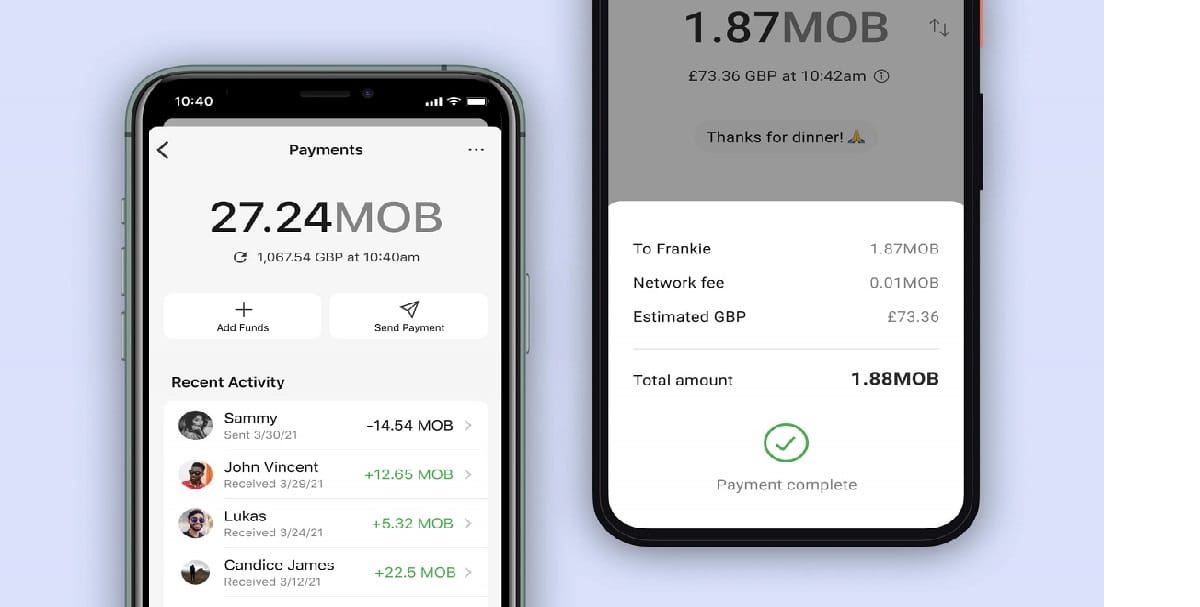
The Signal Technology Foundation, that develops the secure communications system Signal made it known recently that has resumed work on the publication of the code for the parts from the messenger server.
After the publication of changes to the public repository was stopped without explanation on April 22 of last year (2020) and the update of the repository was stopped after the announcement of the intention to integrate the payment system in Signal.
Now (a year after that) The tests of the payment system integrated in Signal began, based on the cryptocurrency MobileCoin (MOB) itself, developed by Moxie Marlinspike, the author of the Signal protocol and around the same time, the repository published changes to the server components that had accumulated during the year, including the implementation of the payment system. .
For those who do not know about cryptocurrency MobileCoin, they should know that it is designed to build a mobile payment network that guarantees the privacy of the user.
User data remains in your hands only, and the developers of Signal o Infrastructure item managers do not have the ability to access money, user balance data, and transaction history. The payment network does not have a single point of control and is based on the idea of fractional ownership, the essence of which is that all the funds in the network are formed as a set of individual shares that can be redeemed. The total amount of funds on the network is set at 250 million MOBs.
MobileCoin is based on blockchain, which stores the history of all successful payments. To confirm ownership of funds, you must have two keys: a key to transfer funds and a key to view the status. For most users, these keys can be derived from a common base key.
Transactions are formed on the user's computer or phone, after which they are transferred to one of the nodes in the validator state for processing in an isolated enclave.
Data can only be transferred to crypto nodes who have confirmed the use of the unmodified MobileCoin code in the enclave. Each isolated enclave replicates a state machine that adds valid transactions to the blockchain using the MobileCoin Consensus Protocol to validate payments.
To ensure the integrity of the data and protection against retroactive corruption, a Merkle Tree structure is used, in which each branch checks all underlying branches and nodes via set (tree) hash. By having the final hash, the user can verify the correctness of the entire history of operations, as well as the correctness of the past states of the database.
The creator of Signal explained the idea of integrating cryptocurrency into the messenger with the desire to provide users with an easy-to-use payment system that protects privacy, similar to how the Signal messenger ensures the security of communication. Bruce Schneier, a renowned cryptography and computer security expert, criticized the actions of Signal developers. Schneier believes that putting all your eggs in one basket is not the best solution, and the point is not at all that this leads to the bloat and complication of the program, and not even to the doubt of the use of blockchain, and not in a Try to link Signal to a cryptocurrency.
The key problem, according to Schneier, is that adding a payment system to an end-to-end encryption application creates additional threats associated with increased interest from various intelligence agencies and government regulators. Secure communications and secure transactions could well have been implemented in separate applications.
Applications with reliable end-to-end encryption implementations are already under attack and it is dangerous to further increase the degree of opposition: when the functionality is combined, the impact on the payment system will drag the end-to-end encryption functionality with it. If one part dies, the whole system dies.
Source: https://signal.org